The September quarter national accounts were an unmitigated disaster for Australian households.
Real per capita household disposable income recorded its largest annual fall in history, plummeting by 5.8% in the year to September 2023:
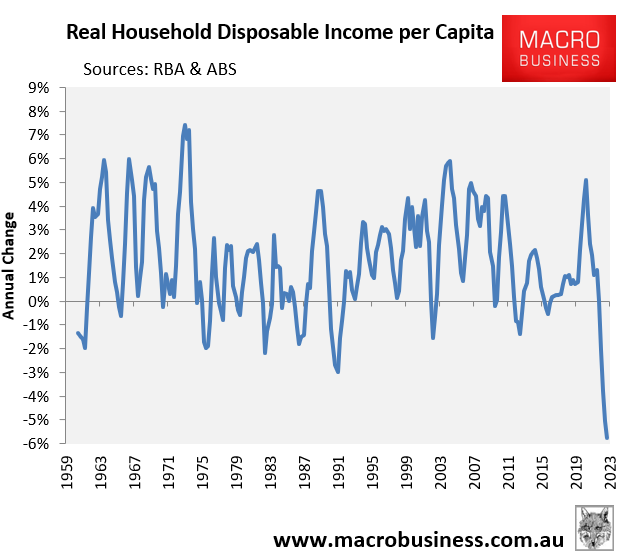
This took real per capita household disposable income back to around the December 2011 level:
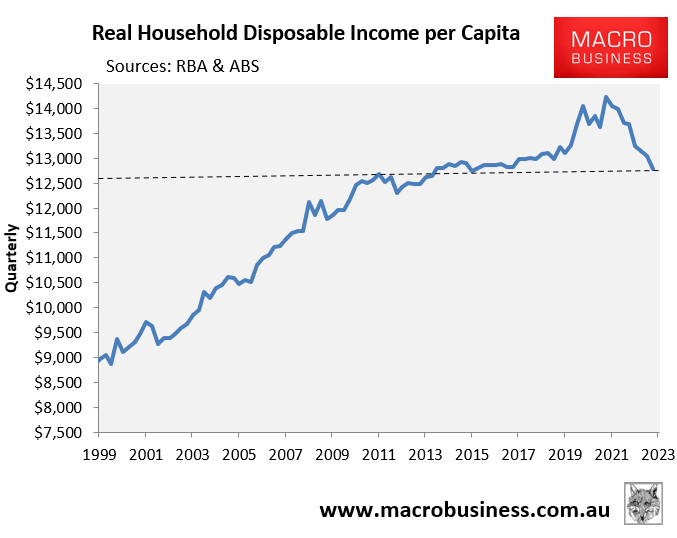
Real per capita household consumption also declined by 1.9% over the year to September, but obviously held up much better than incomes:
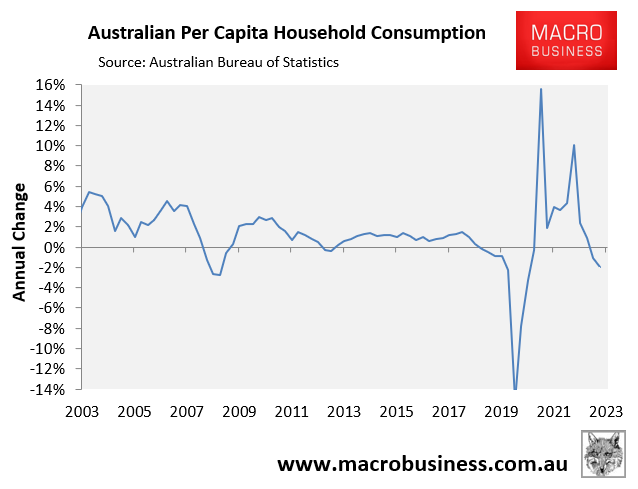
The reason is because Australia’s household savings rate collapsed to just 1.1%, which was the lowest reading since December 2007, before the Global Financial Crisis:
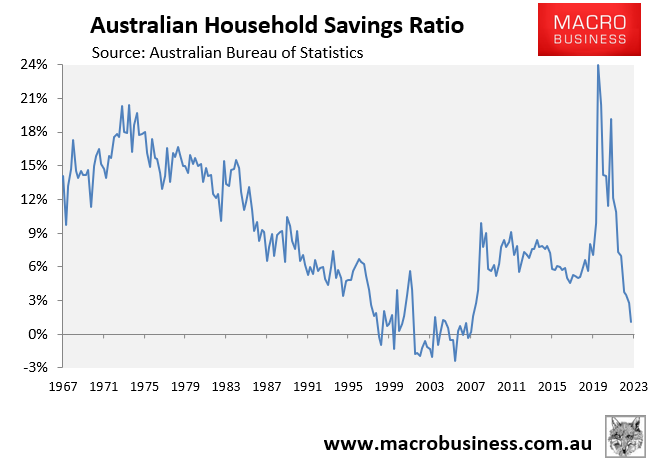
This suggests that household consumption could fall in the period ahead unless incomes magically rebound.
Alex Joiner, chief economist at IFM Investors, published the below chart on Tuesday which is derived from the latest Westpac consumer sentiment survey:
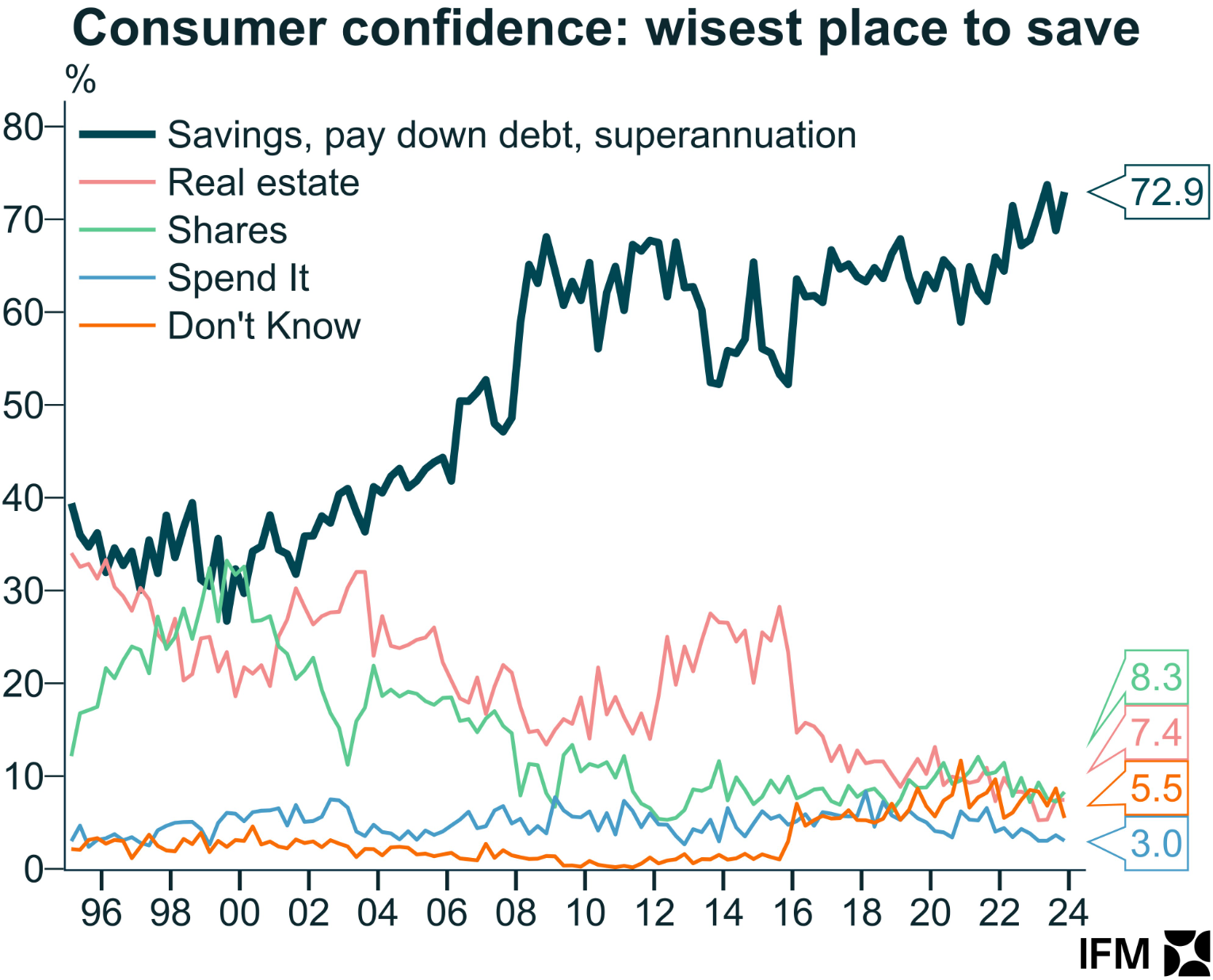
It shows that “if people can they are saving and deleveraging”, rather than consuming, explains Joiner.
This helps to explain why retail sales volumes has collapsed, down 1.7% in aggregate and by 4.5% in per capita terms in the year to September:
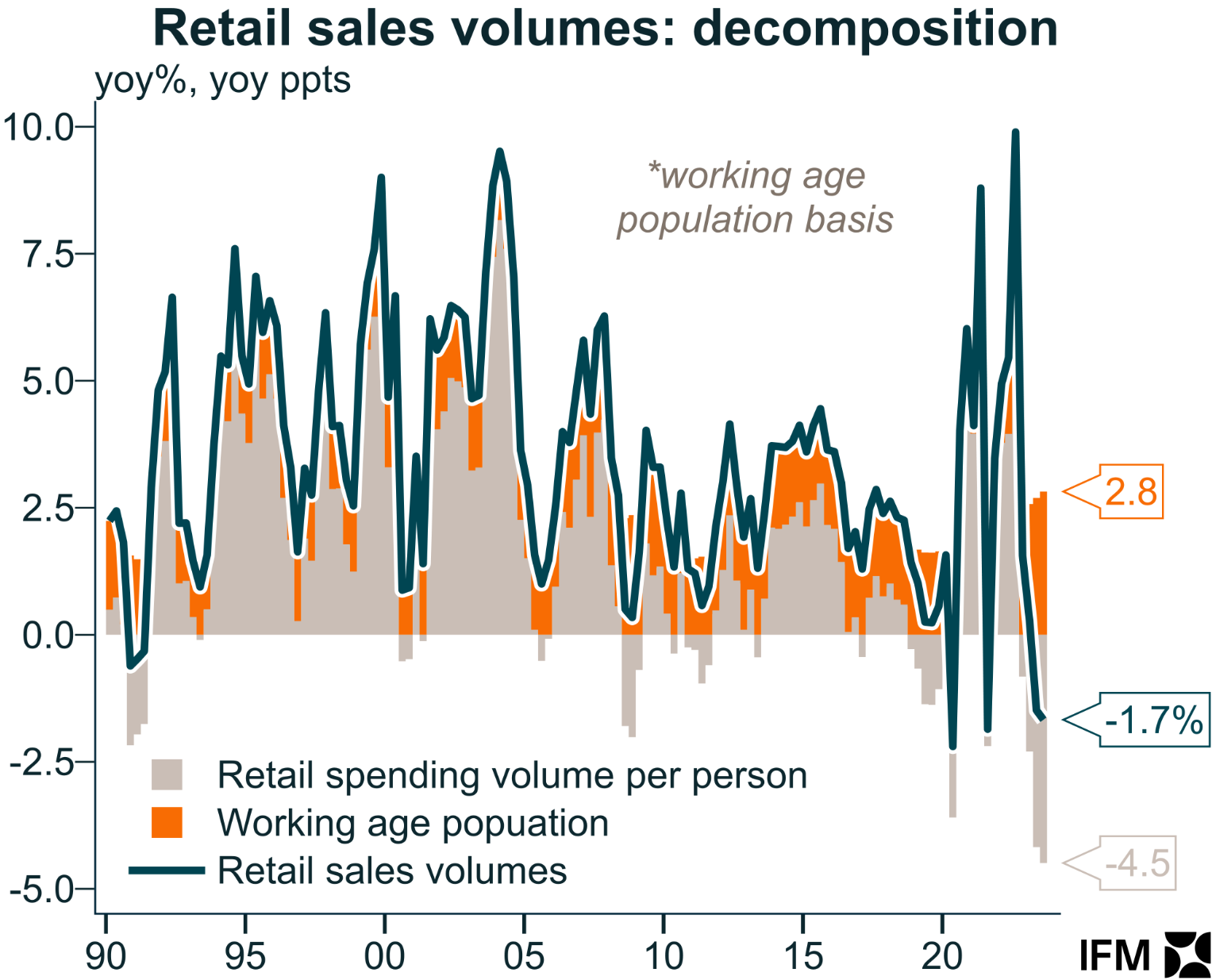
Australian households are hurting under the weight of falling real incomes, surging mortgage repayments and rents.

Accordingly, they are cutting back where they can and attempting to create a financial buffer to ride out Australia’s long per capita recession.

